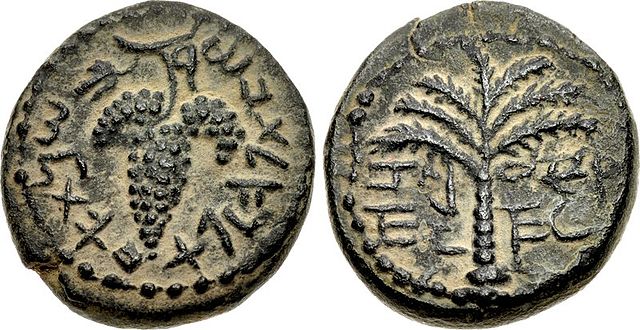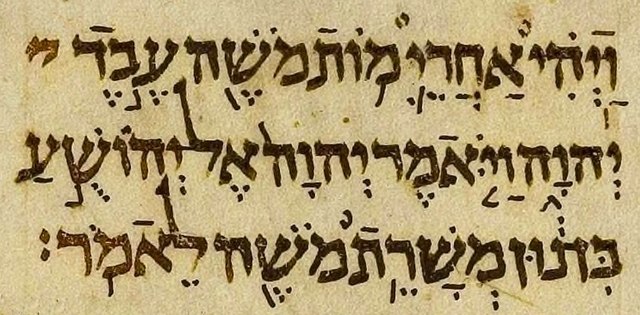The Bar Kokhba revolt was a large-scale armed rebellion initiated by the Jews of Judea, led by Simon bar Kokhba, against the Roman Empire in 132 CE. Lasting until 135 or early 136, it was the third and final escalation of the Jewish–Roman wars. Like the First Jewish–Roman War and the Second Jewish–Roman War, the Bar Kokhba revolt resulted in a total Jewish defeat; Bar Kokhba himself was killed by Roman troops at Betar in 135 and the Jewish rebels who remained after his death were all killed or enslaved within the next year.
Detail of Simon bar Kokhba from Benno Elkan's Knesset Menorah
Bar Kokhba's tetradrachm overstruck on a denarius. Obverse: the Jewish Temple facade with the rising star. Reverse: A lulav, the text reads: "to the freedom of Jerusalem"
Bar Kokhba's coin. Obverse: Grapes, the text reads: "year 1 to the redemption of Israel". Reverse: a date palm with two branches of dates; “Eleazar the Priest” (in Hebrew) around
Territory held by the rebels in blue.
Hebrew is a Northwest Semitic language within the Afroasiatic language family. A regional dialect of the Canaanite languages, it was natively spoken by the Israelites and remained in regular use as a first language until after 200 CE and as the liturgical language of Judaism and Samaritanism. The language was revived as a spoken language in the 19th century, and is the only successful large-scale example of linguistic revival. It is the only Canaanite language, as well as one of only two Northwest Semitic languages, with the other being Aramaic, still spoken today.
Portion of the Isaiah Scroll, a second-century BCE manuscript of the Biblical Book of Isaiah and one of the best-preserved of the Dead Sea Scrolls.
The word IVRIT ("Hebrew") written in modern Hebrew language (top) and in Paleo-Hebrew alphabet (bottom)
A silver matchbox holder with inscription in Hebrew
Aleppo Codex: 10th century Hebrew Bible with Masoretic pointing (Joshua 1:1).








